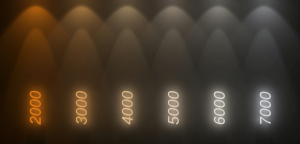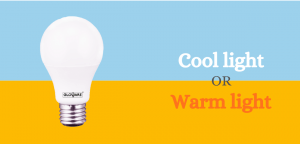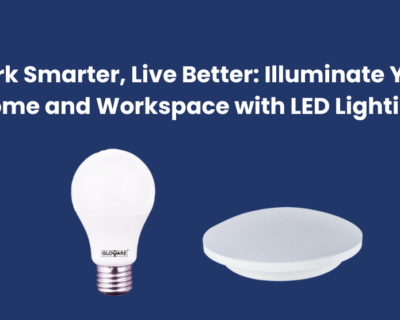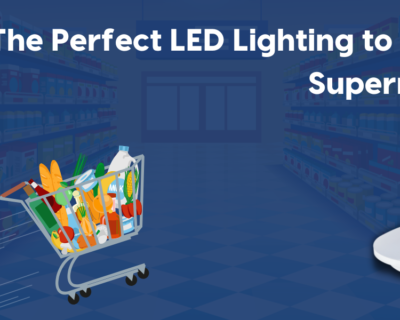How to choose the right LED colors for your home & office

How to choose the right LED colors for your home & office
Colors have more of an impact on our life than one might think. They have the ability to influence how we feel, think, behave, and digest information around us, even if it does not appear so. They serve as important means of communication for us to understand what is going on around us and what has to be done. Consider the colors used at traffic lights: red indicates that you must stop, while green indicates that you are free to proceed, these colors give us direction of what to do next. Peace is also symbolized by white flags, and friendship is symbolized by yellow flowers. You can make a lasting impression on people and attract potential customers by using the proper colors in your brand design and business cards. Using the right set of colors can evoke the right feelings, which can influence our choices.
Taking that into consideration, colors can be divided into two categories: warm and cold.
Cold colors are hues of blues, greens, purples, and other variants of such colors, whereas warm colors are tones of reds, yellows, oranges, and other such combinations. That’s why whenever you paint your house/office you choose colors in accordance with the emotion(s) you wish to evoke in your space. The same principle of colors applies to lights as well and is where a knowledge of color temperature comes in handy.
What is the color temperature you might ask? Well, it refers to the warmth or coolness of light emitted by a light bulb in basic terms. Colors are produced by several sources of light & color temperature is the number that appears when various colors are placed on a Kelvin scale to determine their warmth (in Kelvin).
Light bulbs normally have a temperature range of 2200 to 6500K. The light will be cooler if the color temperature is higher and vice versa. As a result, a low color temperature will be more orangey and yellow-hued, and will be referred to as “warm,” while a high color temperature will be much more white with a little blue tone, and will be referred to as “cool.”
Why are color temperatures so important?
If you know a fair bit about color psychology, you’ll realize how crucial this is when choosing the proper colored illumination for your home/office environment. Consider whatever works best to achieve the purpose, ambiance, and style you desire in the spaces of your home or business before picking on light bulbs.
Warm white light bulbs have been the most commonly used lighting alternatives. On the Kelvin Scale, they range from 2,200K to 3,000K in temperature. They’re termed ‘warm white’ because they emit white light with a gentle orange-yellow tinge, as the name implies. This can help you create a welcome and calm atmosphere while also brightening your room. Warm colors are commonly utilized to create the illusion of a warmer environment, making them ideal for usage in social settings.
That’s why the Gloware LED panel light, comes in a white color option for the frames and a variety of LED light options to help you make the right choice. They can be used to create an appealing and soothing atmosphere in your living room, dining room, or bedroom, as well as in libraries, and retail areas.
Cool white light bulbs are commonly utilized in workplaces that require a diligent and focused ambiance. These light bulbs are called ‘cool white’ because they have a blue tone in the white light and are radiant. This produces a clear and energizing effect that is ideal to focus on work. Such lights are ideal for task lighting, lights at work and school, as well as a modern styled home.
How to select the appropriate color temperature?
Although various light colors (blue, yellow, red, and so on) are available, the most illuminating color is white. They can range from extremely warm white light to bright daylight. The color of light will be warmer (more red) when the Kelvin value decreases & the light color will be cooler (bluer) as the Kelvin value increases. A LED bulb intended to create a pleasant ambiance, for example, produces a significantly warmer light than LED lighting in an office space.
While choosing the perfect light for your environment, consider the following questions:
- What is this light’s purpose?
Consider what it is used for and where it will be placed.
- Which activities will be carried out in this location?
Consider what you or someone else would be doing in this place that would necessitate certain illumination.
- What kind of feeling or vibe do you wish to evoke?
Do you require a stimulating environment for better concentration or a warm, inviting atmosphere?
- What colors and materials are used in that room?
Consider the color scheme of the room where these lights will be installed. This covers the color scheme, furniture, and themes you aim to design in your room. Warm white lights bring out the beauty of warmer colors like red, yellow, and orange, as well as wood furniture, whereas cool white light brings out the freshness and brightness of blue and white colors.
Need assistance in making the transition to the right LED lighting for you?
Making the switch to LED lighting will not only make your life bright but allow you to focus better! The number of families and businesses switching to LED is steadily increasing. The most significant benefit is that you will save a significant amount of money on your energy bills. In certain circumstances, it’s even as high as 90%! Furthermore, Gloware has a solution for all your home and office spaces. That’s why our experts from Albirco can offer you excellent LED lighting guidance. As a result, we work together to benefit the environment and reduce global CO2 emissions while making your life easier.
So what are you waiting for? Click here to book an inquiry & buy from the best collection of Gloware LED lights from Albirco.







